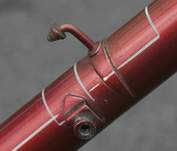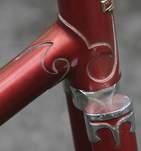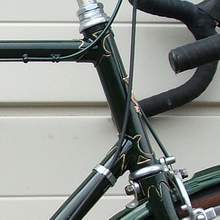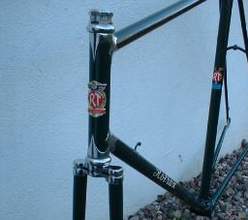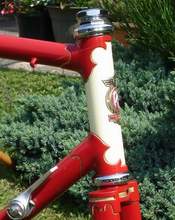Rotrax
Posted: Thursday 04th June 2020
Rotrax is one of the slightly less well known framebuilders in the UK but the quality of many of their frames in the early 1950s was as good as the very best available anywhere. Their attention to detail on their top models was just exquisite.
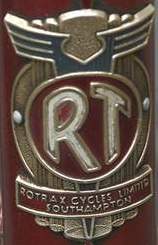
Rotrax Cycles was founded in 1945 at 132 Shirley Road, Southampton. There had long been a cycle shop which specialised in lightweight bikes on the premises which in the 1930s had been run by Bill Harvell. He sold the business to Freddy Prince who was a local businessman and cyclist. He was newly demobbed from the RAF and coined the new name Rotrax from the common name road/track used for bikes ridden on both the road and track with a fixed wheel.
Road/track machines were very popular with many clubman from the late 1930s through to the 1960s and were often used for time trialling as well as track racing and in winter would with mudguards be used to train on. A limited company was formed and Freddy Prince soon recruited many demobbed RAF personnel some of whom had brazing and engineering skills. A frame building shop was set up in Shirley High Street. A range of frames for 1946 was soon offered, it included a Vel D’Hiv path (track) model, a name that was to stay in their range for more than 15 years.
Their market was initially quite local but Freddy Prince was an excellent businessman … quite rare in the cycle trade … and soon marketed the frames through a large number of agents (other cycle shops) right across Britain. Success was also due in great part to the workshop foreman, Mike Compton who was highly skilled and who developed a range of very nicely crafted frames with lots of original detailing that made design sense as well as making their frames stand apart from the competition.
The beautifully curved brake bridge with reinforcements at seatstays and reinforcement for the brake calliper mounting bolt was a classic piece of truly elegant design. This was at the time when the brake bridge was often a single tube with a hole drilled through for the brake mounting bolt. The small reinforcement pieces used under the pump pegs were also another lovely touch (See images below). Not all Rotrax frames featured these exquisite touches – they always had a cheaper model or two in their range which was very affordable.

The lugwork was developed to new heights in 1950 to 1952. The Super Course model as in the photos here (left, above and below) featured really elegant hand cut lugs. The front of the head lugs were really quite original in design. The Concours model launched at the November 1951 London Cycle Show featured the most ornate lugs yet and by exhibiting a chrome plated show frame with a retail price of £100 attracted a huge amount of publicity. The early 1950s were a golden age for cyclists and Rotrax capitalised on a large market – Mike Compton told me that over 2500 frames were made at Rotrax in 1951.
After 1953 the market declined rapidly with the end of rationing. Rotrax bought out a new stock model, the Shirley that was available in just five standard sizes. With the decline in the market they also built frames for other names too. Thanet Silverlight frames were built in Rotrax’s workshops from 1954 on. And in 1952 they had started the manufacture of motorcycle Speedway frames which were to prove to be a large success.
But the market in lightweight frames diminshed geatly and in the late 1950s the Rotrax name was either sold or licensed (its not exactly known which) to Witcomb Cycles in Deptford, London. This arrangement continued until the late 1960s when the name came back to Mike Compton who by this time was building frames also under the Kingston name. The Rotrax shop changed hands again in the 1960s and closed only recently.
The only change in the Rotrax range which Witcomb’s acquired earlier this year is in the transfer design. Standard colour in the Rotrax range will be tangerine with black head. Boult frames have now been discontinued.
Thanks to Bob French, the Veteran-Cycle Club’s Marque Enthusiast for Rotrax for help and advice and would welcome any information on Rotrax as a company or on individual machines. Bob French can be contacted on 01932 851175.
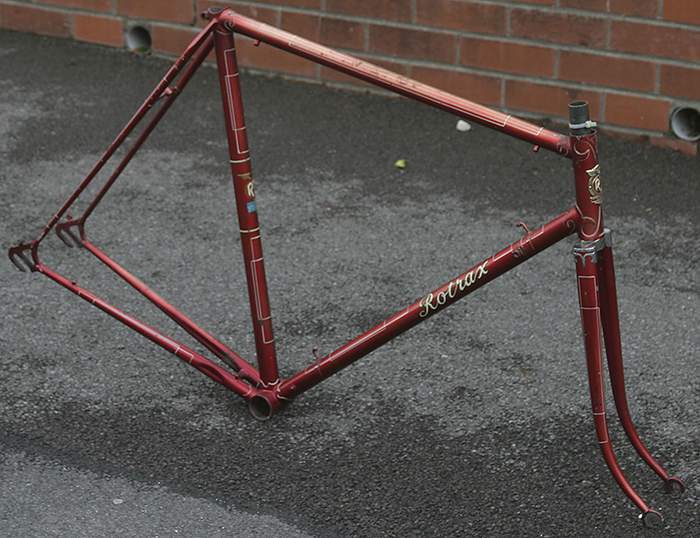
Rotrax Models
Super Club A basic model built with Reynolds 531 double butted tubing.
Vel D’Hiv Path The track model which featured the same lugwork as as the Super Course.
La Premiere Introduced around 1948 this had similar lugs to the Super Course but was slightly less expensive.
Super Course The top model until the Concours came along – the lug design of the early models was not as elaborate as from about 1950 onwards.
Concours The top model which was available as a track frame optionally. Launched 1952.
Shirley A stock model with standard continental lugs. Although mostly built with Reynolds 531 double butted tubing, in later years a cheaper 531 plain gauge version was also sold.
La Prima Built with Nervex Professional lugs this was only launched in 1957.
Tourist In the 1951 catalogue, it was essentially a touring version of the La Premiere.
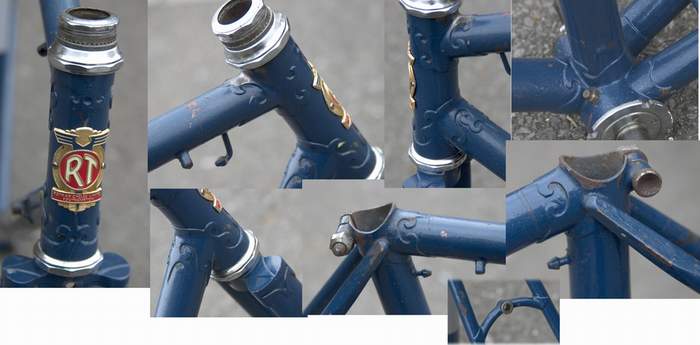
Frame Numbers
Rotrax frames are easily dated and identified – they used a small stamp for the numbers which were neatly punched round the bottom edge of the bottom bracket shell. The first two numbers eg 51 denote the year in this instance 1951.
More images and details of some Rotrax models by Peter Underwood
Rotrax offered different models as stock frames over the years; the one on the left is a variant of the Shirley model from 1957 with a pattern of the Nervex Serie Legere lug. The Shirley model at this time was offered built either from 531 butted tubing (the De Luxe A) or built from 531 plain gauge (Standard B).
The centre image is believed to be a Club or Super Club model from around 1951-2. The Club and Super Club models were Rotrax’s budget priced models before the Shirley was introduced around 1953.
Far Right is an early Supercourse from 1949 with the long spear point lugs but without the windows in the head lugs of later Supercourses as illustrated earlier in this piece.
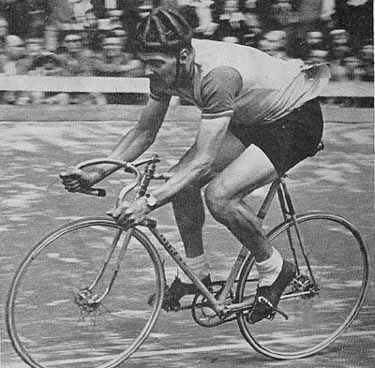
It was with “The Southern” that Charlie scored his many notable successes just after the war. Southern Paragon drew its members, mostly keen racing men, from the Winchester and Eastleigh areas of Hampshire. Charlie was a Winchester native, and lived very happily in our fair City for the majority of his long life.
Charlie did not ride a Rotrax Vel d’Hiv model, but was supplied with four Rotrax frames in total, the first in 1946 by Mr. Robbins and Mr. Prince. Three were specials, not based on any catalogue model. The first two were built for short distance time trials and track work which were Charlie’s specialities, with, rather distinctively when used for road work, fitment for a rear brake only. The last was an all-over chromium plated Concourse model, for use with a Sturmey-Archer hub. Previous to provision of frames by Rotrax, Charlie had worked for Hyde Brothers’ cycle shop in Winchester, where he built his own frame after hours.
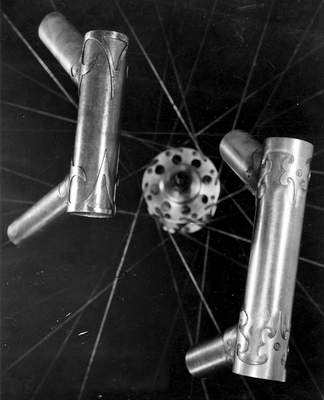
Tim Maund points out that he has been building Rotrax road and track frames since the mid-80’s and has a blog at www.rotraxcycles.wordpress.com the blog also has a section on the history of the Rotrax marque as well as listing frames for sale. He may be able to help with restoration enquiries relating to decals, headbadges, etc. Tim also produces Rotrax jerseys and the ubiquitous Rotrax cape to keep you dry on those rainy rides.
Mick Butler adds that at one time Charles Noble owned the retail side of Rotrax Cycles Ltd. He thinks he purchased it in the mid 50’s but many clubmen will remember him especially through the shop and his long and illustrious association with Southampton Wheelers C.C. He was their treasurer for 16 years 1972-1988 and President for seven, 1994-2002.
Sadly, Jon Baylis died recently and along with his brother David, they were both two top riders with S.W.C.C. and rode Rotrax. Jon of course gained National trophies in his own right and his brother David as a team member. Mick thinks there was a third brother called Michael in the club as well. Jon Bayliss and Charles Noble rode VTTA Grand Prix des Gentlemen, both on their Rotrax machines.
Posted: Thursday 04th June 2020
Contents
- Overview
- About Rotrax
- Curved brake bridge
- curved brake bridge photos
- Super Course model
- Witcomb
- Rotrax machines
- Rotrax Models
- Rotrax Concours
- Frame Numbers
- Rotrax models by Peter Underwood
- Rotrax different models
- Charlie Marriner riding his Rotrax track machine
- F.K.R. Piggott-Morris
- Image of Rotrax Supercourse and Concours lugs
- Tim Maund
- Mick Butler
This article appears in the following categories.
Upcoming Events
Whether you are looking for a gentle social meet up, or a 100-mile ride browse the community’s upcoming events and plan your next weekend outing.

